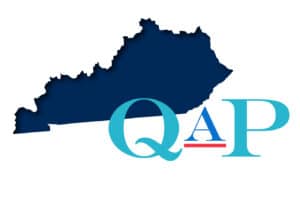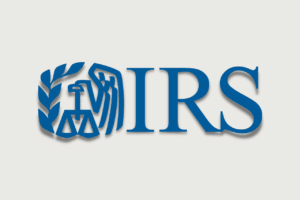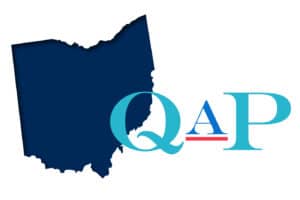IRS/Tax Issues

Kentucky Releases Draft Income Average Compliance Policy
The Kentucky Housing Corporation (KHC) released a draft of the Income Average Compliance Policy for public review. This policy establishes guidance for KHC partners electing to use the new Average Income set aside. Public comments will be accepted through Tuesday, October 15, 2019 to Phyllis Clem at pclem@kyhousing.org.

IRS Provides Safe Harbor for Rental Real Estate Businesses
Revenue Procedure 2019-38 provides a safe harbor for certain interests in rental real estate, including interests in mixed-use property, to be treated as a trade or business for purposes of the qualified business income deduction under section 199A of the Internal Revenue Code (section 199A deduction).

IRS Updates Opportunity Zones FAQ
The Internal Revenue Service (IRS) updated its Opportunity Zones Frequently Asked Questions (FAQ) page with information on when investors can adjust basis to fair market value, a list and map of designated qualified opportunity zones, how to become a qualified opportunity fund and whether inventory in transit can be qualified opportunity zone business property.

Ohio Posts Second Draft QAP – Comments Due August 30
The Ohio Housing Finance Agency (OHFA) posted the second draft of it’s 2020 QAP which includes the proposed fee schedule for 2020 as well as the Universal Design components for scoring (replacing the Aging in Place criteria). Comments on the second draft are due by August 30. All comments should be sent in writing to QAP@ohiohome.org.
OHFA has drafted a new fee schedule to be implemented upon approval of the 2020-2021 QAP and is seeking public comment.

IRS Publishes Final Regulations on Section 50(d) Income
The Internal Revenue Service published the final regulations regarding Income Inclusion When Lessee Treated as Having Acquired Investment Credit Property under section 50(d)(5) of the Internal Revenue Code. The final rule clarifies that Section 50(d) income is a partner item rather than a partnership item, that Section 50(d) income goes to the partner in the […]

IRS Updates OZ FAQ
The Internal Revenue Service updated its Opportunity Zones (OZ) Frequently Asked Questions (FAQ) page to include a new question on the realization of an Internal Revenue Code Section 1231 gain.

NCSHA Urges Treasury and IRS to Provide Guidance to HUD on Income Limits for Income Averaging Developments
The National Council of State Housing Agencies sent a letter to the Department of the Treasury and IRS urging them to expedite guidance to HUD on how it should establish income limits for the 20, 30, 40, 70, and 80 percent of area median income (AMI) levels necessary for Housing Credit projects that elect to use the average income test for their minimum set-asides.

Treasury, IRS Release Second Tranche of Opportunity Zones Guidance – Hearing July 9
The Department of the Treasury (Treasury) and the Internal Revenue Service (IRS) released a new notice of proposed rule making on Opportunity Zones. A public hearing will be held on July 9 at 10 am EDT at the New Carrollton Federal Building at 5000 Ellin Road in Lanham, Maryland 20706.

IRS Clarifies Veterans Housing Eligible for Tax-Exempt Bond Financing
The Internal Revenue Service (IRS) released Revenue Procedure 2019-17 which clarifies that preferences for veterans or other specific populations do not violate the general public use requirement for tax-exempt bonds and the Low Income Housing Tax Credit. This guidance comes two weeks after several Senators sent a letter to the IRS requesting clarification.

Senators Ask IRS for Clarification on PABs Use for Affordable Housing for Veteran
Six Senators sent a letter to Internal Revenue Service (IRS) Commissioner Charles Rettig requesting he issue a notice clarifying that affordable housing projects for veterans that comply with the LIHTC General Public Use criteria are also eligible for Private Activity Bonds (PABs). Sens. John Cornyn (R-TX), Catherine Cortez Masto (D-NV), Diane Feinstein (D-CA), Kamala Harris (D-CA) Mazie Hirono (D-HI) and Jacky Rosen (D-NV) argue that, “given that LIHTCs and PABs are designed to be used in tandem, the General Public Use criteria explicitly laid out in the LIHTC statue should apply to PABs as well.”

IRS Releases Resident Population Figures to Calculate 2019 LIHTCs, PABs
The Internal Revenue Service published Notice 2019-19, which provides population figures to use in calculating 2019 volume limits for the low-income housing tax credit (LIHTC) and private activity bonds (PABs). The LIHTC cap is the greater of the population multiplied by $2.75625 or $3,166,875 and the PAB cap is the greater of the population multiplied […]

IRS, Treasury Amend LIHTC Compliance-Monitoring Regulations
The Department of the Treasury and the Internal Revenue Service published final regulations that amend the compliance monitoring regulations concerning the low-income housing tax credit under section 42 of the Internal Revenue Code. These final regulations revise and clarify the requirement to conduct physical inspections and review low-income certifications and other documentation. The regulations are […]